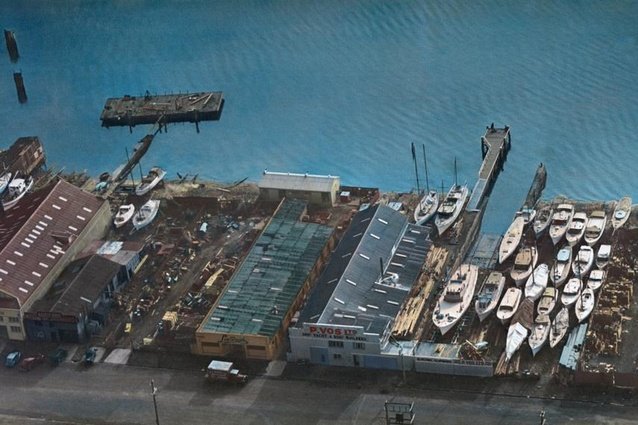Why we’re bringing Auckland’s maritime treasure, Vos Heritage Boat Yard, back to life

Auckland’s waterfront runs through my veins. From a childhood spent scampering among the rocks behind the Percy Vos Boat Yard – which I now have the honour of leading the restoration of – to eight years ago when I joined Waterfront Auckland (now Panuku) to help lead its transformation; the waterfront has been front and centre of my life for as long as I can remember.
My father’s stories of growing up in St Mary’s Bay where he could touch the water at the bottom of his garden fascinated me, and for the Marlers, the highlight in our family calendar was when the weather allowed us to pull out our classic yacht from hibernation and onto the stunning blue waters of the Waitemata Harbour.
So when the opportunity arose to lead the revitalisation of the Vos Heritage Boat Yard as part of my role as Design and Place Director at Panuku, I leapt at it.
Hidden behind an unassuming roller door on Beaumont Street, the Vos boatshed is understood to be Auckland’s last remaining boat yard. Established in the 1930s by the enormously skilled Percy Vos, all of the city’s commercial fleet was once built there along with several of New Zealand’s champion boats, right up until the 1980s.
Since then, the boat yard has sat untouched for nearly three decades while the marine and fishing industries continued to thrive around it. And therein lies its unique beauty. From the moment you enter the space – with its towering bare timber framed ceiling and rustic workbenches scattered throughout – there’s a strong sense that the boat-builders who once kept this glorious hub of marine activity trucking simply downed tools and walked out of its rickety wooden doors just yesterday.
From the time the Vos restoration project was first floated, funding has never been an easy conversation. But in October last year, Panuku was fortunate enough to secure support from council’s Built Heritage Acquisition Fund (who act as the catalyst for the revitalisation of heritage buildings in areas identified by council for urban intensification, such as Wynyard Quarter) for the first of two stages of works – the clean-up of the boat yard.
The result will be a compliant and structurally sound building; ship shape and ready to showcase a unique snapshot in time of the city’s maritime history to the public. It will be used for functions and events, and parts of it may be leased as office space; the proceeds of which will be allocated to further works or maintenance.
The clean-up is expected to get underway in June. A key priority alongside the health and safety of the visiting public will be how we retain the authenticity of the space while giving people a true-to-life experience of a working boat yard. Less is more in this case.
It’s this very challenge that leads me to think about the Waterfront Plan 2012 which when refreshed last year, Panuku reaffirmed its commitment to Aucklanders to create a world class destination that excites the senses and celebrates our sea-loving Pacific culture and maritime history. Part of this work is to ensure the waterfront remains a welcome home for marine and fishing industries; a place for authentic and gritty activities.
This commitment is the inspiration behind the second stage of works planned for the boat yard – the repair of its slipway to allow for classic wooden boats to once again be worked on at Vos.
This piece of the puzzle will work to elevate people’s experience of Vos from the feeling that they’ve just visited a museum to ‘wow, that place is the real thing’. In the same way that I can vividly recall the feel of the grease and dirt from the boats on my skin, a working boat yard sat right on the city’s waterfront will offer the same experience to generations ahead of us.
The working elements of the restoration will serve to catapult the relevance of Vos beyond a moment in history into the modern day. People will be able to feel, smell and see for themselves exactly why wooden vessels remain a functioning and vital part of today’s marine tapestry, which I think is something worth celebrating in itself.
Rod Marler is currently the design and place director at the city’s regeneration agency Panuku Development Auckland following roles at Westfield NZ, the Canterbury Earthquake Recovery Authority and with the Samoan Government. This was originally published on Panuku’s website.


